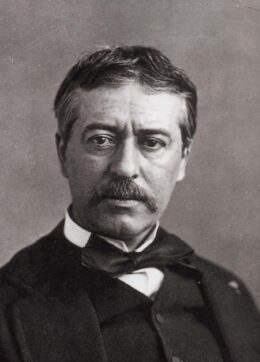
Printed
33 pages
Author(s)
La Clémence de Titus
La Clémence de Titus is a satirical comedy “imitating Aristophanes and Plautus” and written in “a mix of verse and prose”, as indicated in the introduction of the play. The play uses the title of Mozart’s famous opera, but it tells an entirely different story. It features rhythms inspired from Jean Racine’s Phèdre as well as references to Offenbach, Samson (who finds himself strengthless after his hair is cut) and to songs that used to be sung in the street. The play also makes many references to Ancient Roman culture, which are interspersed with scatological jokes.
Sand’s writing is also characterised by an attention given to the characters’ names. Thus, the name Lycoris – given to a character that is meant to be lyrical – is also the name of a famous courtesan.
A man begins serving a couple to save his enslaved beloved
The shepherd Tityre lives in the Arcadian mountains with his beloved, a Zither player named Lycoris. One day, Lycoris strays away from their home and is captured by Lycophon, a pirate who sells her to a slaveholder Flagellantus, then to the Emperor’s barber Pelliculus and finally to the senator Mamillarus. Tityre follows the pirate ship to save his beloved. In the meantime, Mamillarus and Titus are waiting for a feast to begin. Tityre decides to buy his beloved back, but he does not have enough money. Therefore, he decides to start serving Mamillarus and his wife Mamillara. However, it is discovered that Tityre is in fact Mamillarus’ legitimate son, who was kidnapped by bandits. At the end of the play, César Titus arrives and sings his goodness and his absence of pride, in the fashion of street “hits”. He gives Lycoris her freedom back and offers to pay for the wedding.
Other titles
First performance
House of George Sand
Publications and translations
Maurice Sand, Le Théâtre des marionnettes. Paris: Calmann-Lévy, 1890.
Maurice Sand, Le Théâtre des marionnette. Marseille: Jeanne Laffitte, 1999.
